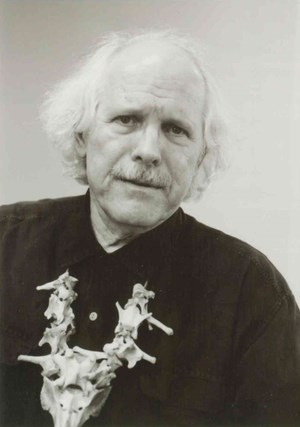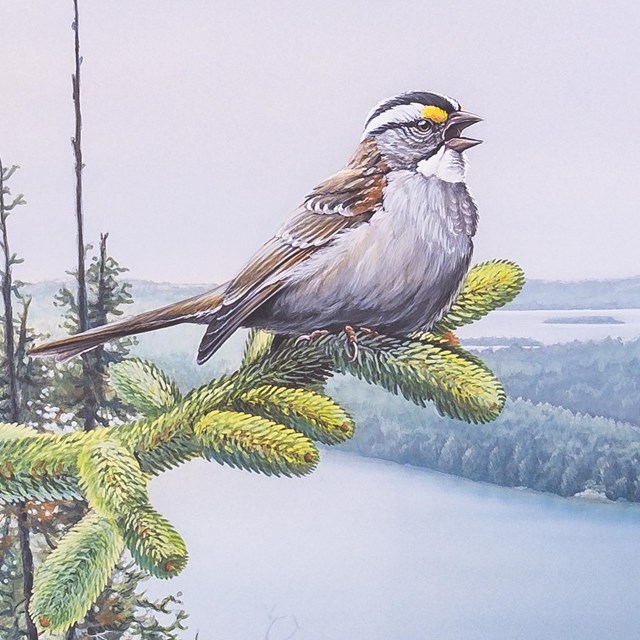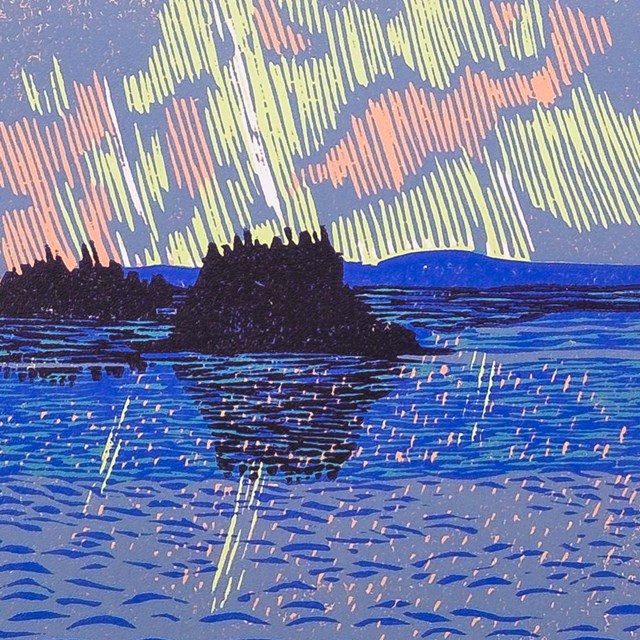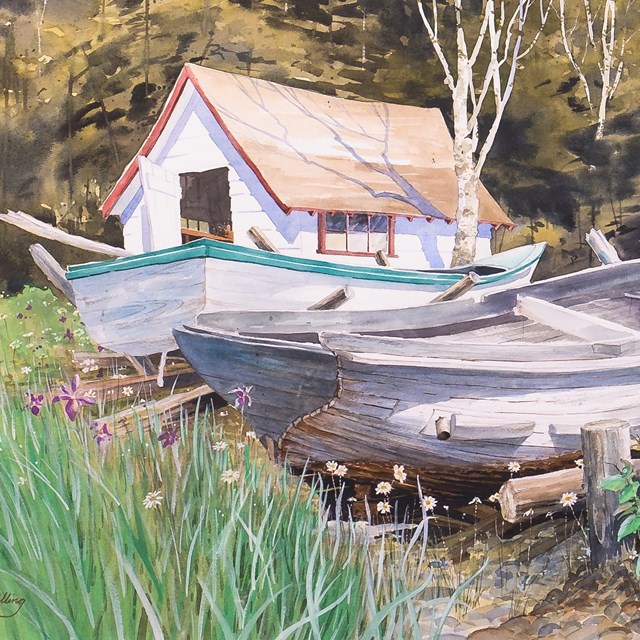
NPS/Gendron Jensen Isle Royale Reflection"A raging wind of all one day pulled thundering waves whose spindrifts shot fully ten feet above the high basalt cliffs on Scoville point. We nestled within our thin-framed cabin, hugging away the chilled droning night which followed. Beyond the cliffs, ravens uttering throaty, airborne proclamations, whished out from and in to the doorless mists. Passing over and among boulders, the clear waters of Lake Superior welcomed gazings into their depths. The canoe flew silently, like a great bird bearing us above an undulating shadow cast far below on the rolling bottom of Tobin Harbor. 
Photo by Joey McLeister About the ArtistTime and time again, artist Gendron Jensen heard the question, “Why bones?” It is not a surprising question. The workroom in his northern New Mexico home was a plethora of bones. Relics of elks, wolves, loons, lynx and coyotes lined his shelves. Other smaller boxes spilled forth from old cigar boxes. Drawings of bones also adorned the room – a small sampling of the 1,500 relic drawings the self-taught artist completed over 40 years. It bears asking, “Why were bones the focus of each drawing?” “From ancient times, [bones] have been held as representative of sterility, aridity and death,” Jensen explained. “For me, beyond the physical fact of death, bones are portals unto exaltation. The bones seem to verily sing; they hum with resonate mystery.” Jensen’s drawings attempted to unveil that resonating mystery. He refined and enlarged relics, juxtaposing shapes and textures to create sculptural, iconographic forms. The bones of a white-tailed deer and gray wolf came together to form a counterpoint of prey and predator. Opossum cheekbones were portrayed in jigsaw-puzzle fashion along with a snapping turtle vertebra. It all – in Jensen’s eyes – represented the creatures’ very foundation of being. “The spirits of the animals are in the bones,” he said. “They speak of life and the creature they once were.” The Smithsonian Magazine described Jensen’s work as “meticulously rendered, often monumental, graphite drawings of bones which invite the viewer to see these relics in a new way – to journey beyond their ordinary anatomical context to a deeper, more spiritual realm.” Jensen’s fascination with bones was sparked when he was just six years old. His youthful exploration of Pokegama Lake in Minnesota uncovered a small rodent skull. It was a discovery that initiated his bond with nature, though that bond would not take the form of drawings until the age of 26. Next Artist-in-Residence by Date
|
Last updated: December 26, 2019



